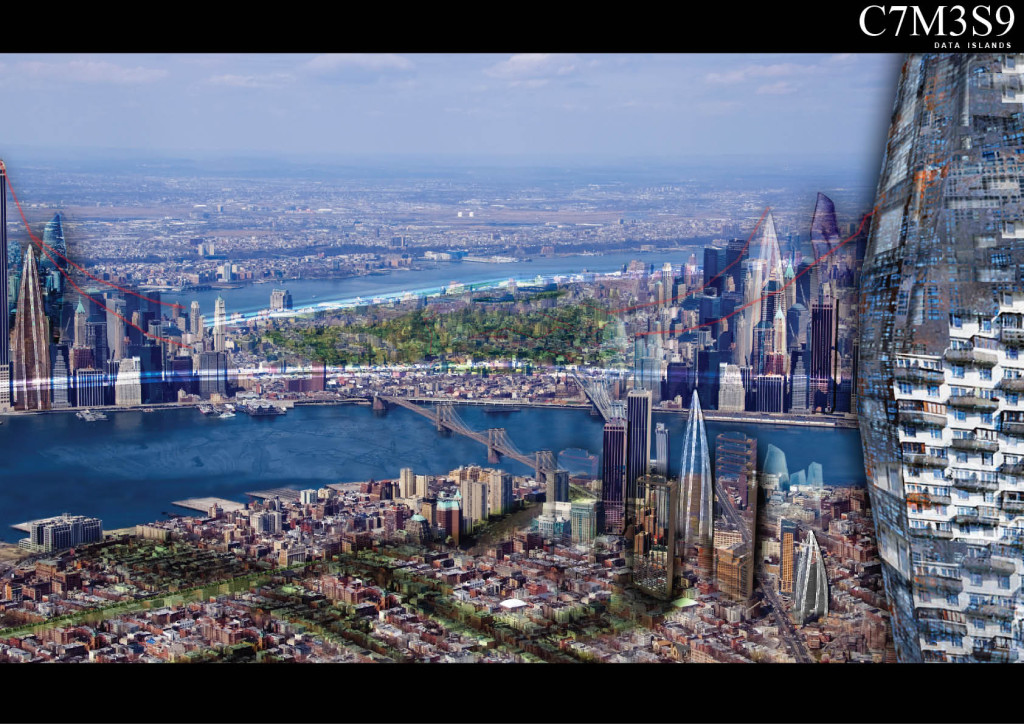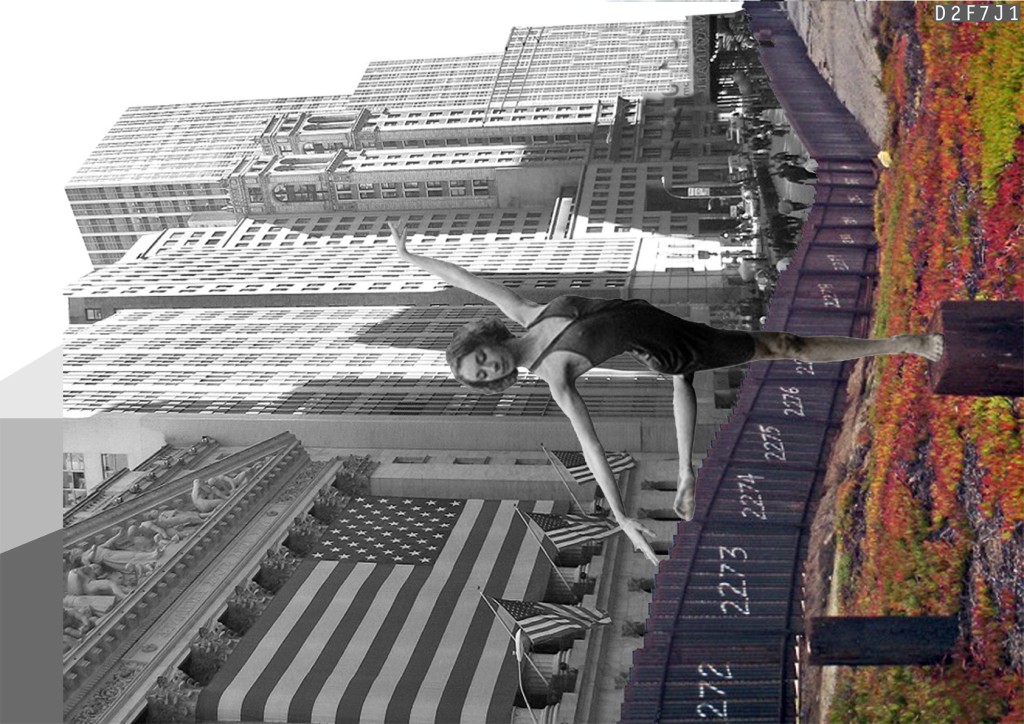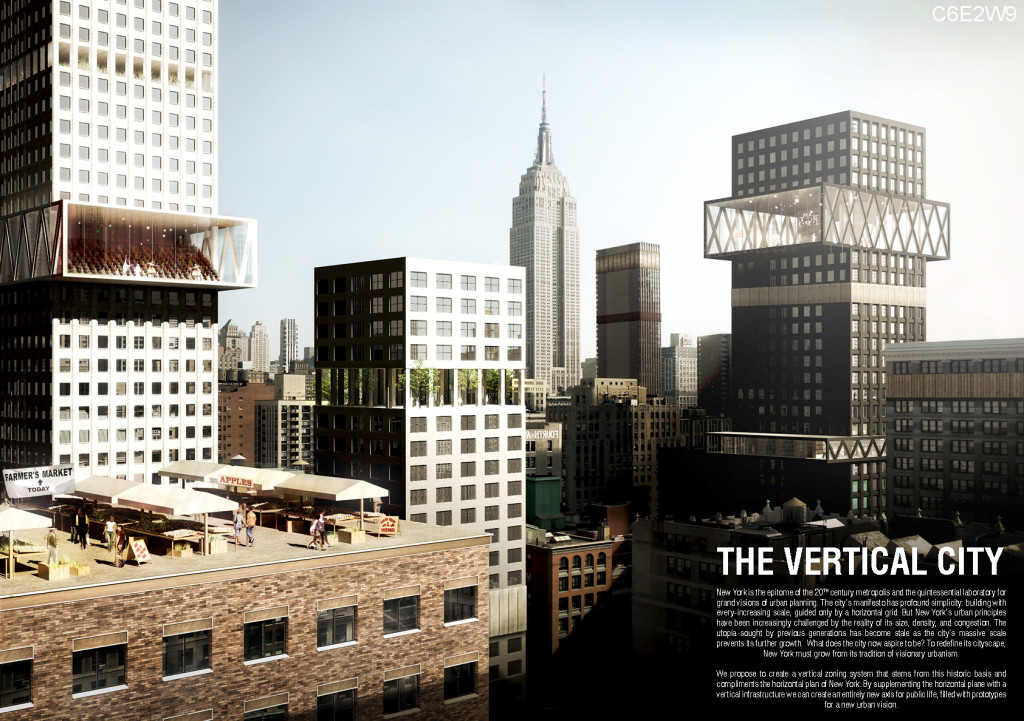Info:
Title: Report written 2052 - Code: C7M3S9Contest: NY / 2012
By: D. Kapodistria - R. Broadbent
Views: 2923 Likes: 0
Votes:
JOSHUA PRINCE-RAMUS4 EVA FRANCH I GILABERT6 ROLAND SNOOKS2 SHOHEI SHIGEMATSU2 ALESSANDRO ORSINI3 MITCHELL JOACHIM02.8
Report written 2052

 Report written 2052: 2029 was a fundamental point at which New York’s distinct urban fabric became clear. New York had been in a state of transition since c.2012; the continual & rapid growth of the technological era had affected the residential and business district like never before. A Day in the Life of Mr R. Jones, Bronx Island resident. November 16th 2049 was the long awaited day my family and I moved into Bronx VRT.1 (Vertical Residential Tower One). Typically I start my day with a view out of our 97th floor apartment; our bedroom has stunning views across the vast green communal gardens & parklands. As our full organic breakfast cook on the hob, the children watch as farmers tend to the land and cattle below. Our breakfast is usually sourced c.24hrs earlier from the Slow Central Zone of New Bronx Island. We typically depart from Bronx VRT.1 as a family, walking a few blocks through the Linking Axis stopping on a Monday at the pharmacy and post office for personal errands. Hand in hand the children & I reach the outskirts of the green communal gardens, rise up to Eco-bullet stop 3.1 and then arrive swiftly at the Slow central zone. Our youngest child often meanders to school alone, enjoying the benefits of the local rural schooling system. I always travel back to VRT.1 to begin office at 9.30am.
Report written 2052: 2029 was a fundamental point at which New York’s distinct urban fabric became clear. New York had been in a state of transition since c.2012; the continual & rapid growth of the technological era had affected the residential and business district like never before. A Day in the Life of Mr R. Jones, Bronx Island resident. November 16th 2049 was the long awaited day my family and I moved into Bronx VRT.1 (Vertical Residential Tower One). Typically I start my day with a view out of our 97th floor apartment; our bedroom has stunning views across the vast green communal gardens & parklands. As our full organic breakfast cook on the hob, the children watch as farmers tend to the land and cattle below. Our breakfast is usually sourced c.24hrs earlier from the Slow Central Zone of New Bronx Island. We typically depart from Bronx VRT.1 as a family, walking a few blocks through the Linking Axis stopping on a Monday at the pharmacy and post office for personal errands. Hand in hand the children & I reach the outskirts of the green communal gardens, rise up to Eco-bullet stop 3.1 and then arrive swiftly at the Slow central zone. Our youngest child often meanders to school alone, enjoying the benefits of the local rural schooling system. I always travel back to VRT.1 to begin office at 9.30am.
As an average person I work from home, virtually linking up with colleagues on the nearby fast periphery zone NBI.2. Here I share data & information from c.9.30-7pm. Mainly we meet virtually, like 95% of my friends & family. Homeworking became law in 2018 for all city businesses with over 250 employees. My employer was actually severely fined when found not complying with the Carbon Footprint Law of 2017. The Data Ring of fast flowing information is crucial to daily life allowing us workers to communicate between the five New York Islands quickly & efficiently. Face-to-face meetings do occur in the Meeting Hubs on an ad-hoc basis c. once per month.
Existing / Change of Use.
2013 saw the turning point where inner city businesses located within high rise towers surrendered their buildings and gave way to the residential sector. Low rise residential areas literally switched places with the business sector. This ‘switching’ was not only physical, but it gave the focus back to the New Yorker as a resident – rather than a worker. The long awaited community status had arrived. No longer did tall city business towers dominate the skyline; vertical communities took over the once banking & trading skyscrapers.
Behind these residential towers was the invisible part of the city as we know it today, the area known as the Data Ring. The Data Ring began life in 2030 as a path circulating digital information, which workers hook-up to, shared & constantly exchanged data. The Intersection points of Data Rings produced two main activities. Physically storing servers (i.e. hardware) on mass and to facilitate business meetings taking place in Meeting Hubs.
Human Scale: Even though invisible technology has been driving city development since c.1980’s when The Digital Revolution began. However, what will always take
precedence is human interaction (i.e. community, recreational &business spaces) will never be superseded by the digital world of virtual existence.
The huge scale renovation/re-development of residents taking ownership of the once large business happened in juxtaposition with the construction of the new low rise ‘server storing’ buildings & Meeting Hubs.
New Island districts were developed from the flood disaster of 2021 which saw the river banks of East River and Upper New York Bay collapse. The coast line was engulfed by up to 2.9 miles inland, with Jamaica bay & surrounding areas completely disappearing. The newly formed coastline became the areas for trade (see Data Rings & Meeting Hubs). Trade in the year of 2021 was predominantly in the form of data; this was as each new island district was more-or-less self-sufficient and no other form of trade was necessary between new islands.
FACTS:
> Fast Periphery Zone of data flow, for workers (facilitating Information trading).
> Slow Central Zone of green, areas where children are schooled, organic produce is farmed & recreations for families occur.
> Linking Axis Health, Retail & Government Offices. People pass through the ‘linear movement’ as part of daily life from the Fast Periphery zone to the Slow Central Zone
> Eco-bullet transportation. Fast speed cycling & trains link Vertical Residential Towers (in Fast Periphery Zone) with the green communal centre (slow central zone).






